On the plains of North America the purple cone flower has been used for snake bites, as well as to ward of fevers and cure slow healing wounds. The eclectic herbalists of the 19th century saw the local people curing with echinacea and adopted the herb into their medicine chest. That is when Echinacea began to gain fame for healing and in the last few decades has become an integral part of western herbalism.
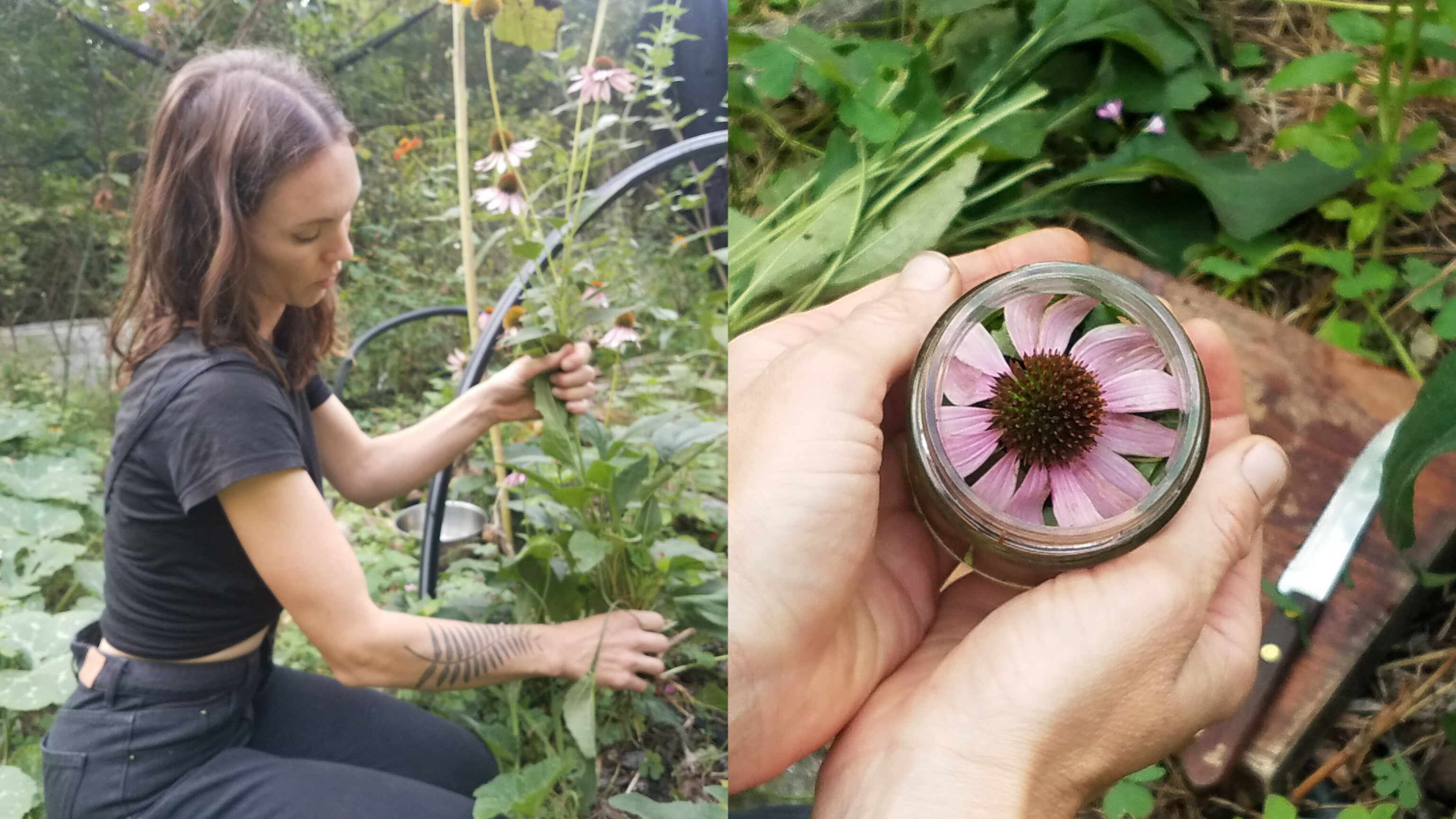
Due to the increase in popularity Echinacea is no longer as plentiful in its native landscape though more and more herbalists are growing this herb in gardens all over the planet. I am one such herbalists who dedicates time and space to growing echinacea which I consider and essential part of my herbalism practice.
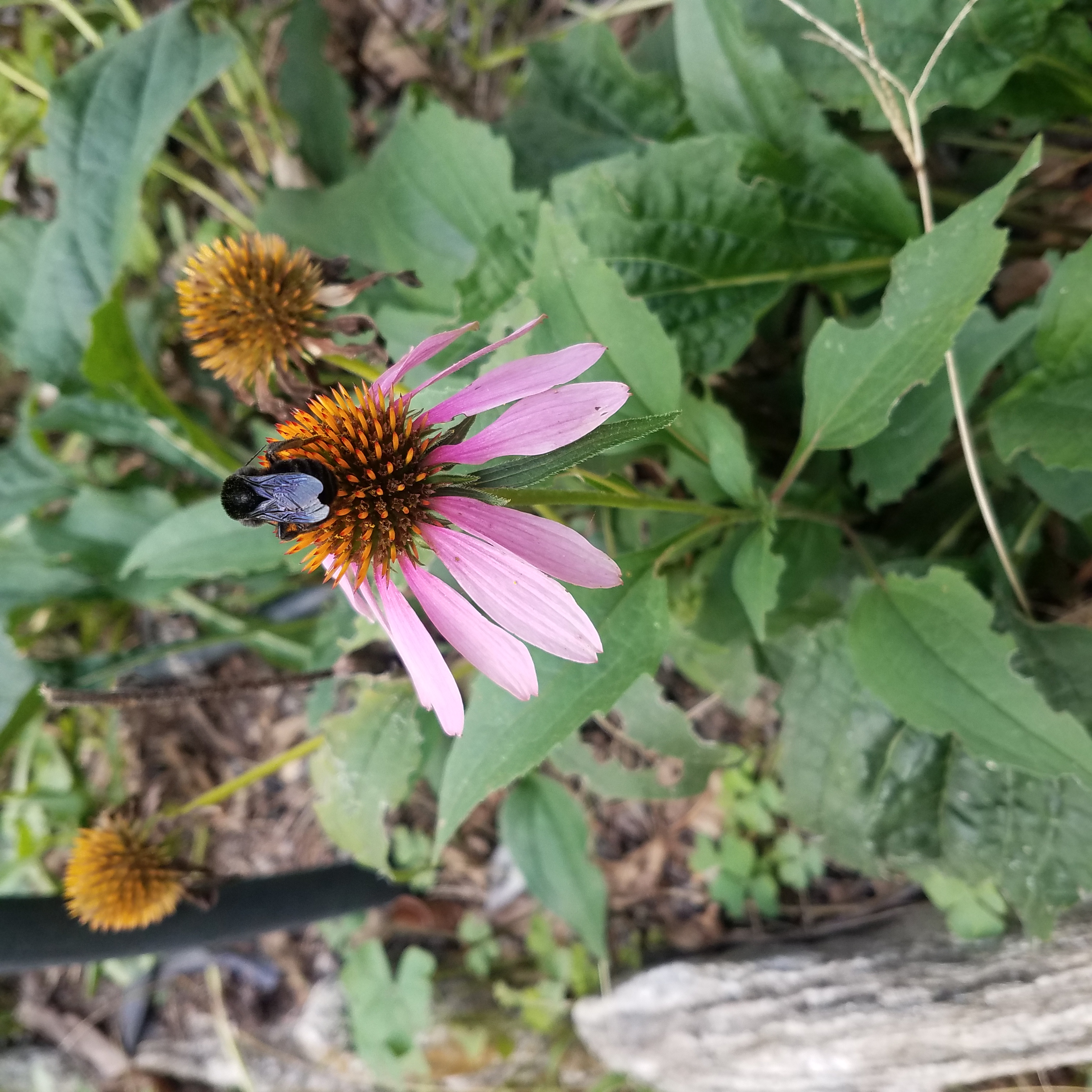
The seeds of these plants come from a nursery I used to help out at in Northern California. The nursery was located at the very edge of a university town where agricultural fields met suburbia. There my gardener friend and mentor grew native plants and hard to find herbs of all kinds. A few of their seeds I brought with me to my garden in the mountains of Argentina.
In this row there are several plants that are between three and four years old and ready for harvesting. This is the great benefit of growing you own echinacea, their medicine is most potent after three years of growth.
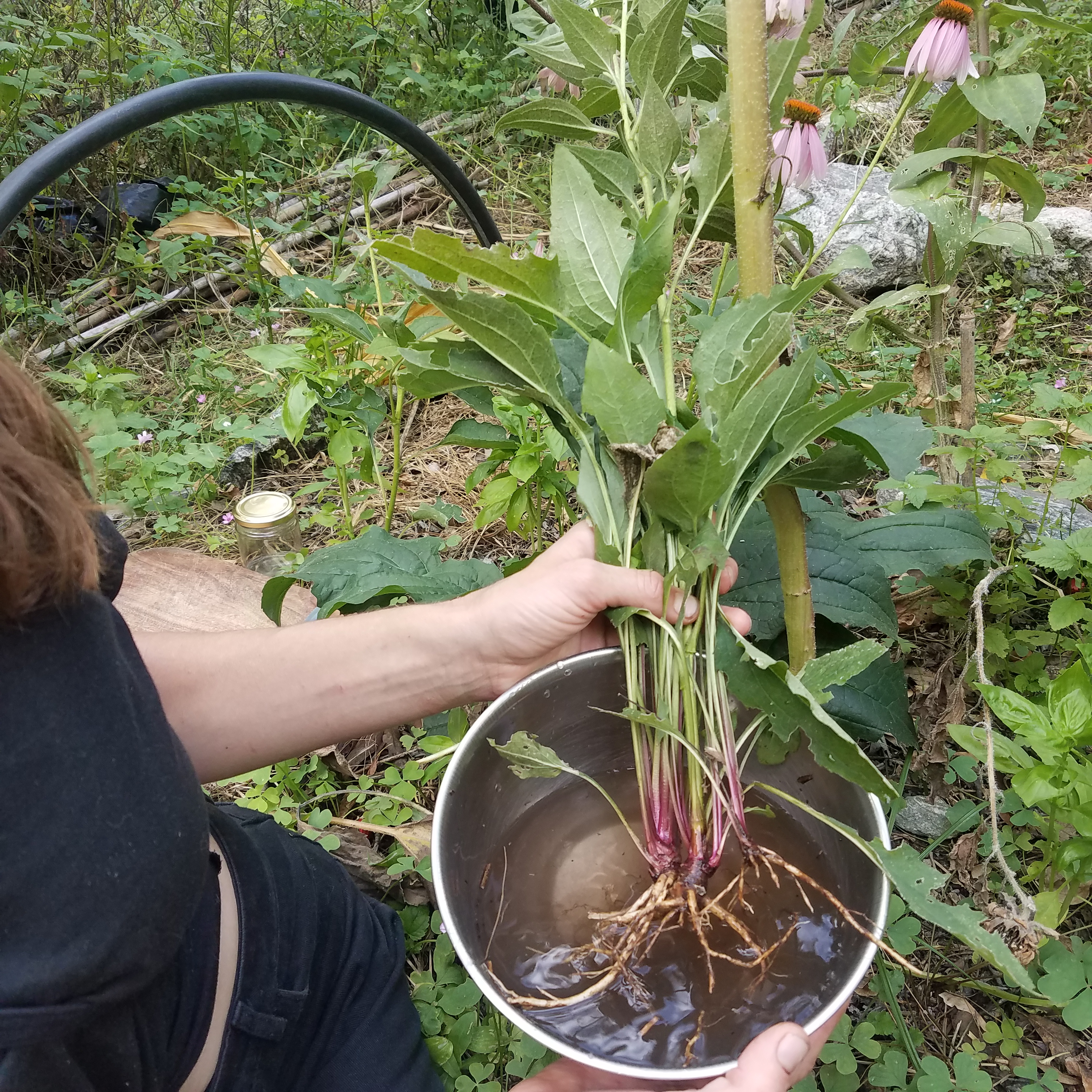
A close friend of mine is going through a major health challenge and needs the antiviral and immune system supporting medicine that is contained in the entire plant. But, of course, the most contentrated medicine is stored in the roots so I took a bit of time yesterday to harvest one plant to make a potent tincture for her. Fall is the best time to harvest the roots in general. I pulled one plant out by hand and rinsed off the soil in a bowl of clean spring water.
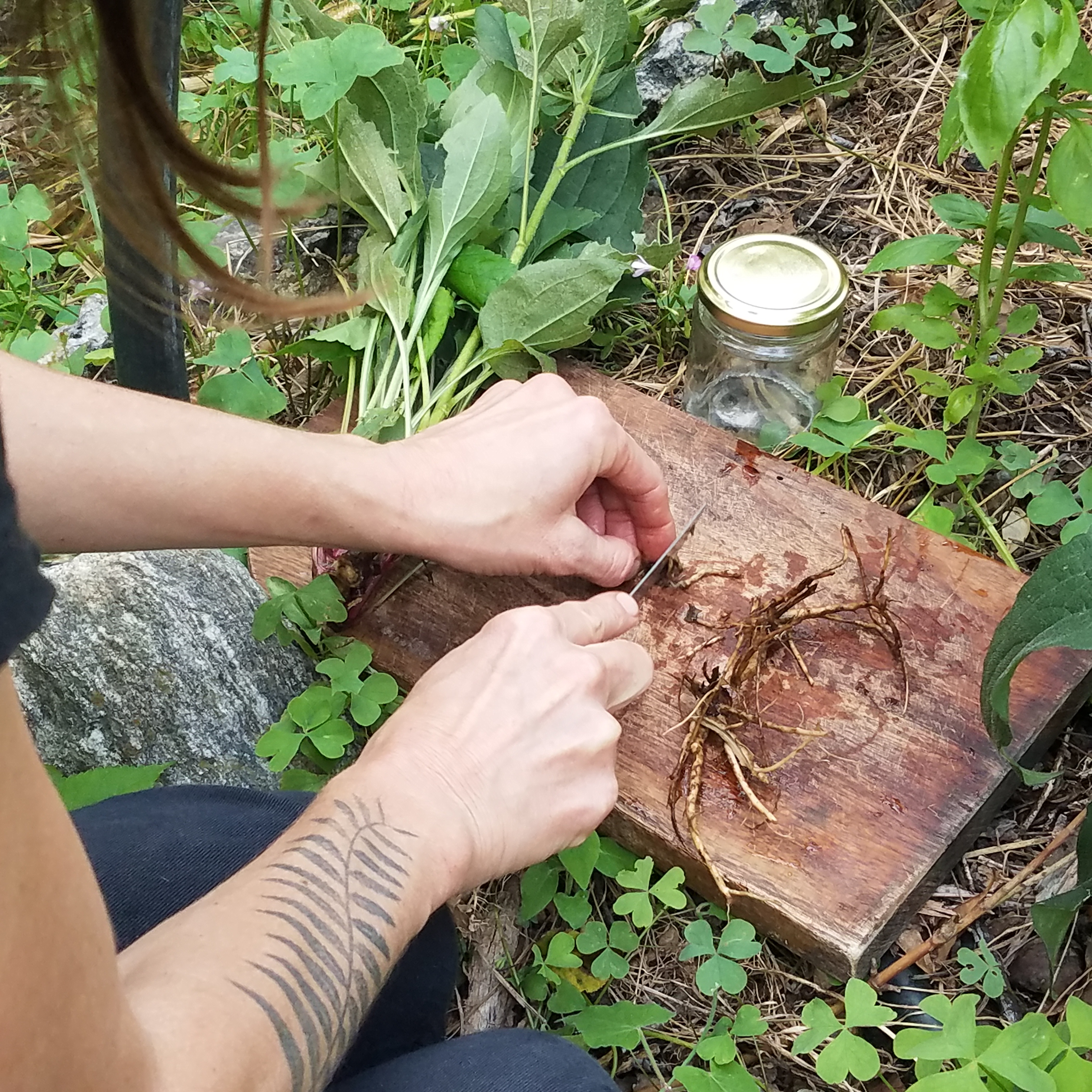
I do most of my medicine making outside and yesterday decided to bring my supplies to the garden. All I needed was a cutting board, knife, and sterilized jar to hold the herbal ingredients. I started out by chopping up the freshly cleaned roots.
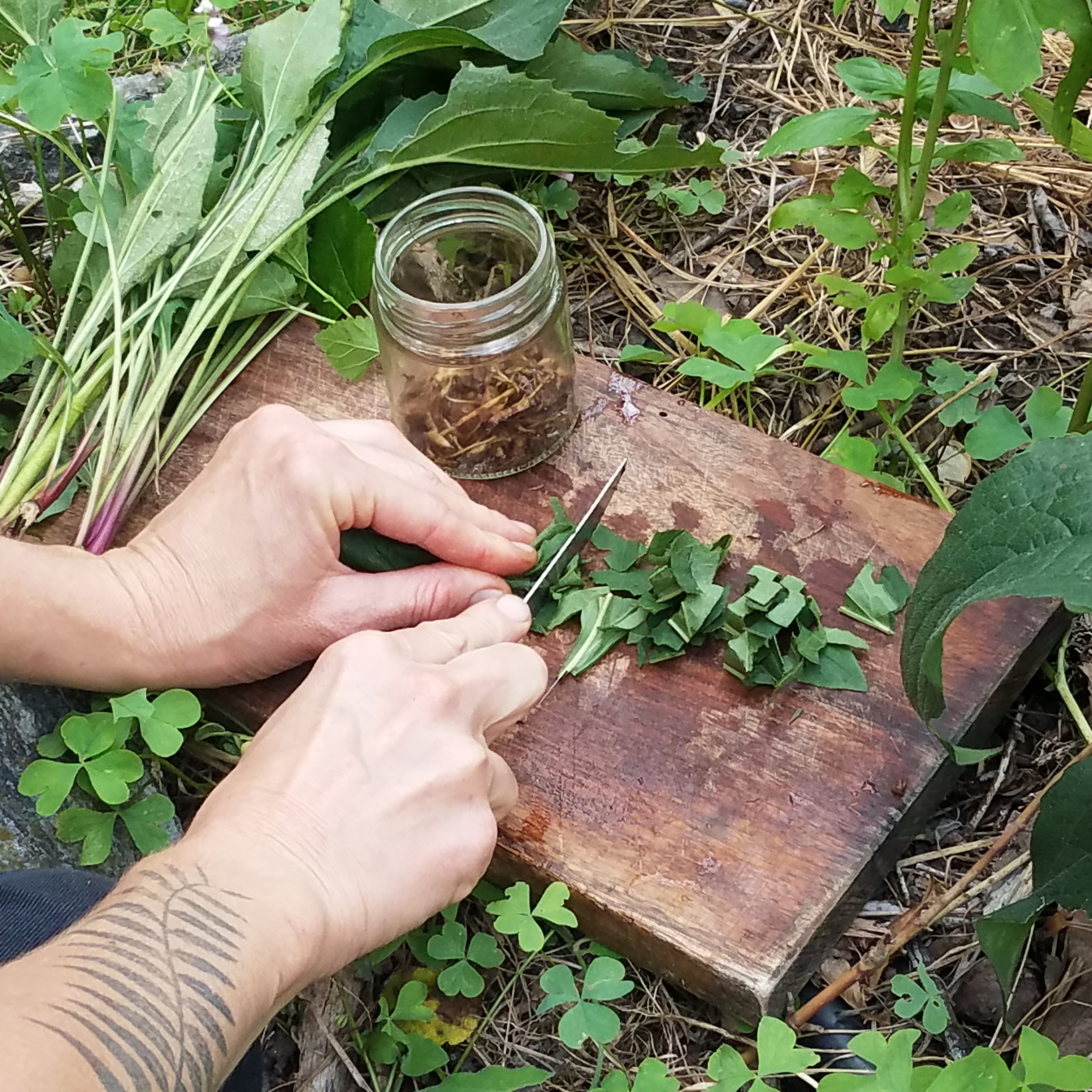
Alongside the roots I also added a few chopped leaves as I have read from several sources that the leaves also contain immune system supporting components. The leaves add a very spicy flavor to the tincture, something like oregano with a bit of chili pepper, so I will give my friend a warning of the extra kick before she tries the tincture.
Then I added a single flower to the small jar and poured over the grain alcohol. This tincture will sit for four to six weeks before separating the plant material and pouring the alcohol into dropper bottles for daily use. In general it is best to take echinacea for two weeks, then rest for two weeks, before beginging the cycle again.
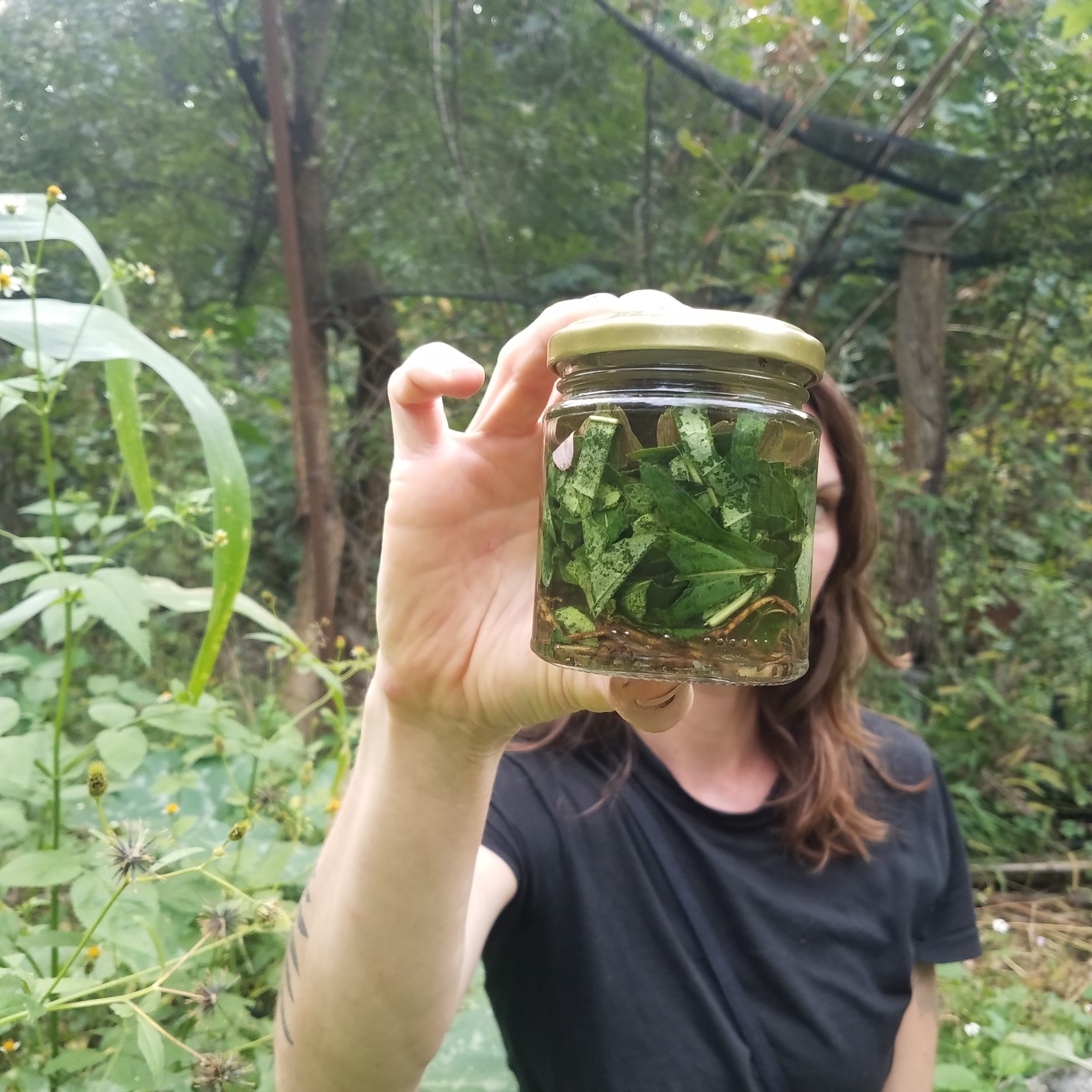
Echinacea has a whole list of herbal actions from immune sytem support, to antiviral, and has even been recomended as a first response for rattle snake bites. I have found even small doses to be a very effective treatment to long term respiratory issues, such as a persistant cough, and a great preventative medicine to avoid illness during the colder months.
In this case there is more than just physical medicine going on here. These plants hold in their roots, leaves, and flowers a whole history of healing. The seeds hail from my homeland, their ancestors have healed my ancestors and the native people of North America for centuries. It is a very significant legacy and I feel honored to be able to share their medicine so far away from where this lineage began.